5 Royal Palaces for Destination Wedding in Jaipur
The epitome of grandeur and romance in Jaipur with our curated list of 5 Royal Palaces for your dream destination wedding cultural heritage of the Pink City

An image of grandeur and royalty comes to mind when we think of destination wedding in Jaipur, here the venues in Jaipur. Being rich in options, there is no reason to leave this charming city while considering the best wedding destinations. If you also fancy a royal wedding, Jaipur could be a spectacular choice for you to tie the knot. The weather from November to February remains pleasant in Jaipur and it is therefore the best time to get married. Here are 25 best wedding venues in Jaipur for a fairytale wedding.
Jaipur, the Pink City of India, stands as an enchanting backdrop for couples seeking a destination wedding that exudes regality and charm. Steeped in history and adorned with architectural wonders, Destination Wedding in Jaipur Jaipur boasts several royal palaces that serve as the perfect venues for an opulent celebration of love. Here, we explore five majestic palaces that promise to transform your wedding into a fairy tale affair.
City Palace : A Majestic Marvel
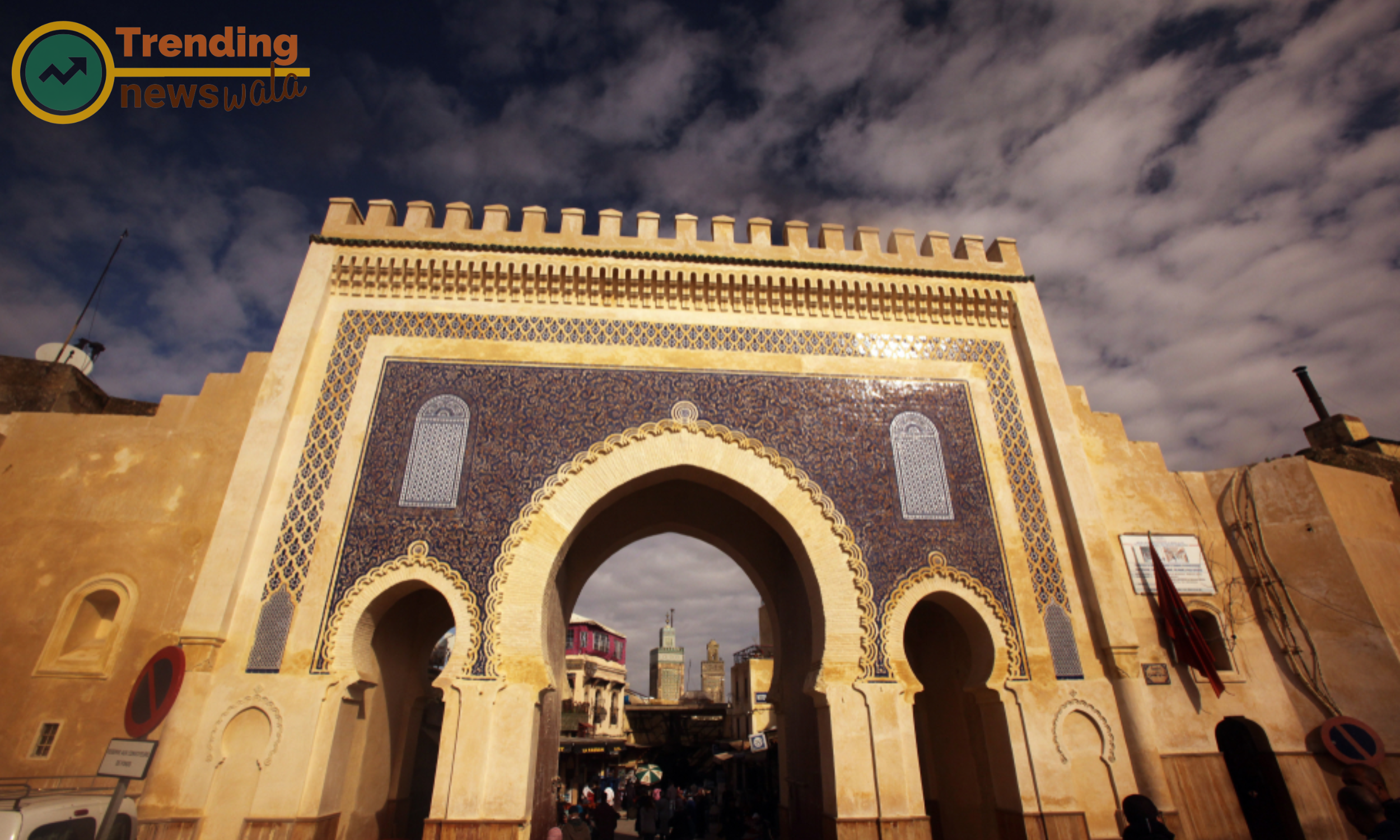
The City Palace in Jaipur is an iconic and majestic marvel that stands as a testament to the city's rich history and royal heritage. Located in the heart of the Pink City, this architectural gem is a fusion of Mughal and Rajput styles, showcasing intricate craftsmanship and grandeur. Here are more details about the City Palace:
Historical Significance:
- The City Palace was built by Maharaja Sawai Jai Singh II, the founder of Jaipur, in the 18th century.
- The palace complex has been expanded and modified by subsequent rulers, each leaving their mark on the architecture and design.
Architectural Splendor:
- The palace is a remarkable blend of Mughal, Rajput, and European architectural influences.
- It features a series of courtyards, palatial buildings, gardens, and ornate gates, showcasing the grandeur of Rajasthani architecture.
Courtyards and Gates:
- The City Palace comprises several courtyards, each with its unique features and purpose.
- The Mubarak Mahal, Chandra Mahal, and Diwan-i-Khas are key structures within the palace complex.
- The entrance gates, such as Udai Pol and Tripolia Gate, are adorned with intricate designs and provide a regal entry into the palace.
Mubarak Mahal:
- Mubarak Mahal, also known as the 'Auspicious Palace,' is an exquisite building that once served as a reception center for the royal guests.
- It showcases a beautiful fusion of Islamic, Rajput, and European architectural styles.
Chandra Mahal:
- Chandra Mahal is the main palace building and serves as the residence of the royal family.
- It is a seven-storied structure with each floor having a distinct name and purpose. The topmost floor, Mukut Mandir, offers panoramic views of the city.
Diwan-i-Khas:
- Diwan-i-Khas is the Hall of Private Audience, adorned with stunning peacock gates.
- It was the place where the Maharaja would meet important guests and discuss matters of state.
Art and Museum:
- The City Palace houses an extensive collection of art, manuscripts, and artifacts belonging to the royal family.
- The museum within the palace complex showcases royal costumes, weapons, paintings, and other historical artifacts.
Wedding and Events:
- The City Palace is a popular venue for royal weddings, events, and cultural programs.
- The grandeur of the palace, coupled with its historical significance, makes it a sought-after destination for couples seeking a regal wedding.
Visitor Experience:
- Visitors to the City Palace can explore its various courtyards, halls, and museums, gaining insights into the rich history and culture of Jaipur.
- The architectural details, vibrant colors, and the overall ambiance create a captivating experience.
The City Palace stands as a living testament to Jaipur's royal legacy, offering visitors a glimpse into the opulent lifestyle of the Maharajas. Whether exploring its intricately designed courtyards, admiring the art collections, or hosting grand events, the City Palace continues to be a majestic marvel that preserves the grandeur of Rajasthan's royal past.
Nestled in the heart of Jaipur, the City Palace is a testament to the city's royal heritage. With its ornate architecture, intricate courtyards, and stunning views of the Pink City, the City Palace provides an elegant setting for a grand wedding. Exchange vows in the historic Diwan-i-Khas or host a lavish reception in the Mubarak Mahal, surrounded by the splendor of Rajput grandeur.
Hawa Mahal : Whispers of Romance
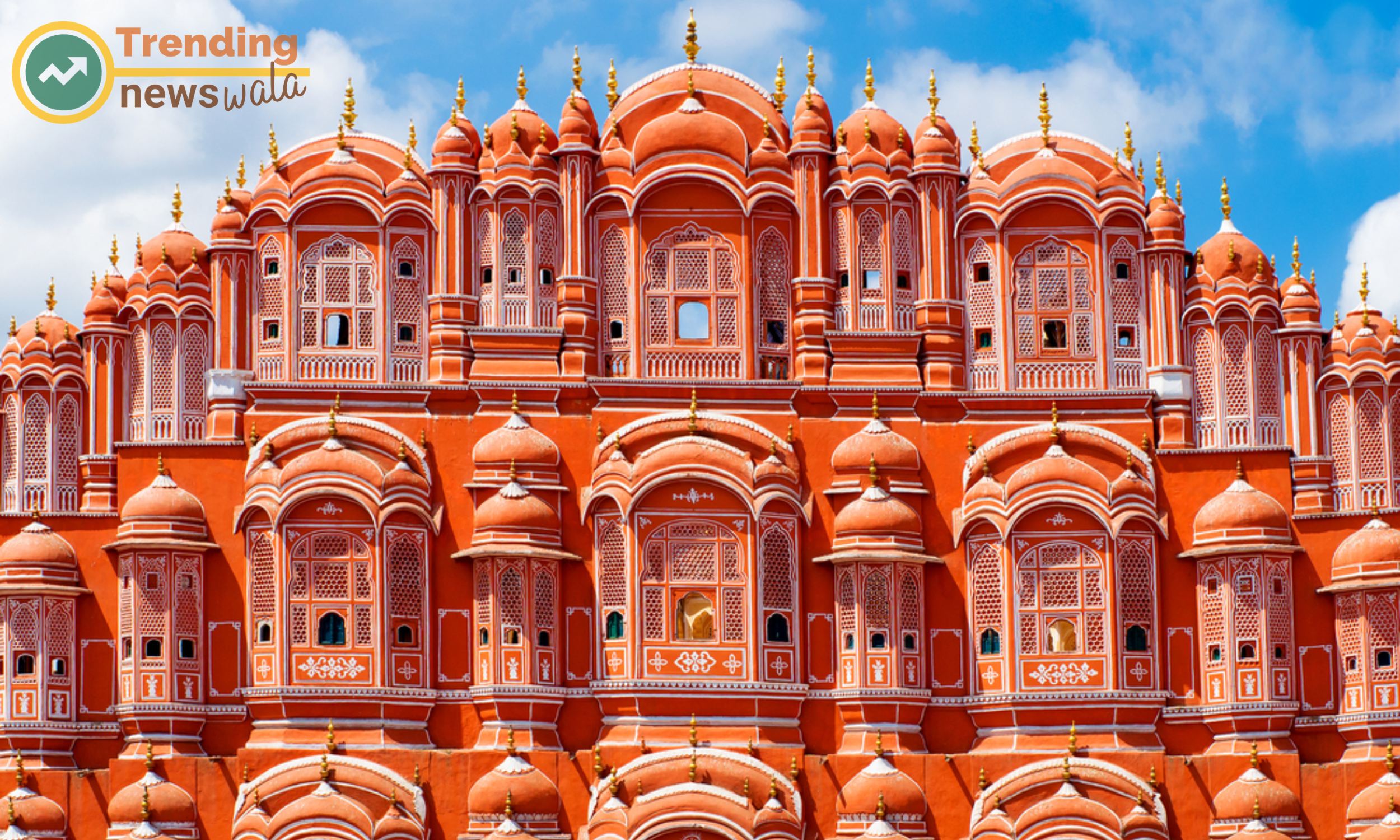
Hawa Mahal, or the Palace of Winds, is an iconic architectural marvel located in the heart of Jaipur, Rajasthan, India. Built in 1799 by Maharaja Sawai Pratap Singh, Hawa Mahal is a distinctive structure that represents the rich heritage and cultural legacy of Jaipur. Here are more details about Hawa Mahal:
Architectural Design:
- The most striking feature of Hawa Mahal is its unique and intricate honeycomb-like façade with 953 small windows, known as jharokhas.
- The jharokhas are designed to allow cool air to circulate through the palace, providing ventilation and earning the palace its name, the Palace of Winds.
Purpose and History:
- Hawa Mahal was built to serve as an extension of the City Palace for the royal women, allowing them to observe street festivals and daily life without being seen.
- The lattice windows not only facilitated ventilation but also provided a concealed vantage point for the women of the royal household.
Pink Sandstone Construction:
- Like many structures in Jaipur, Hawa Mahal is constructed using the distinctive pink sandstone that gives the city its nickname, the Pink City.
- The use of pink sandstone imparts a warm and rosy glow to the palace, especially during sunrise and sunset.
Five Stories of Architectural Grandeur:
- Hawa Mahal rises five stories high, although the main part of the structure is not very deep.
- The palace is more of a façade with the rear portion being much simpler in design compared to the ornate front.
Interior Layout:
- The interior of Hawa Mahal is not as elaborate as its exterior. It consists of narrow passageways and small chambers.
- The primary purpose of the palace was to provide a private viewing area for the royal women, and the interior layout reflects this function.
Strategic Location:
- Hawa Mahal is strategically located in the heart of the Johari Bazaar, allowing it to be a central point for the royal women to observe the activities of the city.
Cultural Heritage:
- Hawa Mahal is not only an architectural wonder but also a symbol of Jaipur's cultural and historical heritage.
- It has become an iconic representation of the city and a must-visit attraction for tourists.
Night Illumination:
- The intricate façade of Hawa Mahal is beautifully illuminated at night, creating a mesmerizing spectacle that showcases the architectural details.
Visitor Experience:
- Visitors to Hawa Mahal can explore its exterior, taking in the stunning views of the city from the numerous jharokhas.
- The palace is often part of guided tours that provide insights into its history, architecture, and cultural significance.
Conservation and Restoration: Efforts have been made to preserve and restore Hawa Mahal to ensure its structural integrity and aesthetic appeal for future generations.
Hawa Mahal stands as a living testament to the architectural ingenuity of the past, reflecting the creativity and vision of the rulers of Jaipur. Its unique design, historical significance, and cultural importance make it an integral part of Jaipur's identity and a captivating destination for history enthusiasts and tourists alike.
The iconic Hawa Mahal, or Palace of Winds, is a unique venue that captures the essence of romance. The intricate latticework windows allow gentle breezes to sweep through, creating an ethereal atmosphere. Host an intimate ceremony on one of the terraces with panoramic views, and let the timeless beauty of Hawa Mahal weave its magic into your special day.
Jai Mahal Palace : Timeless Elegance
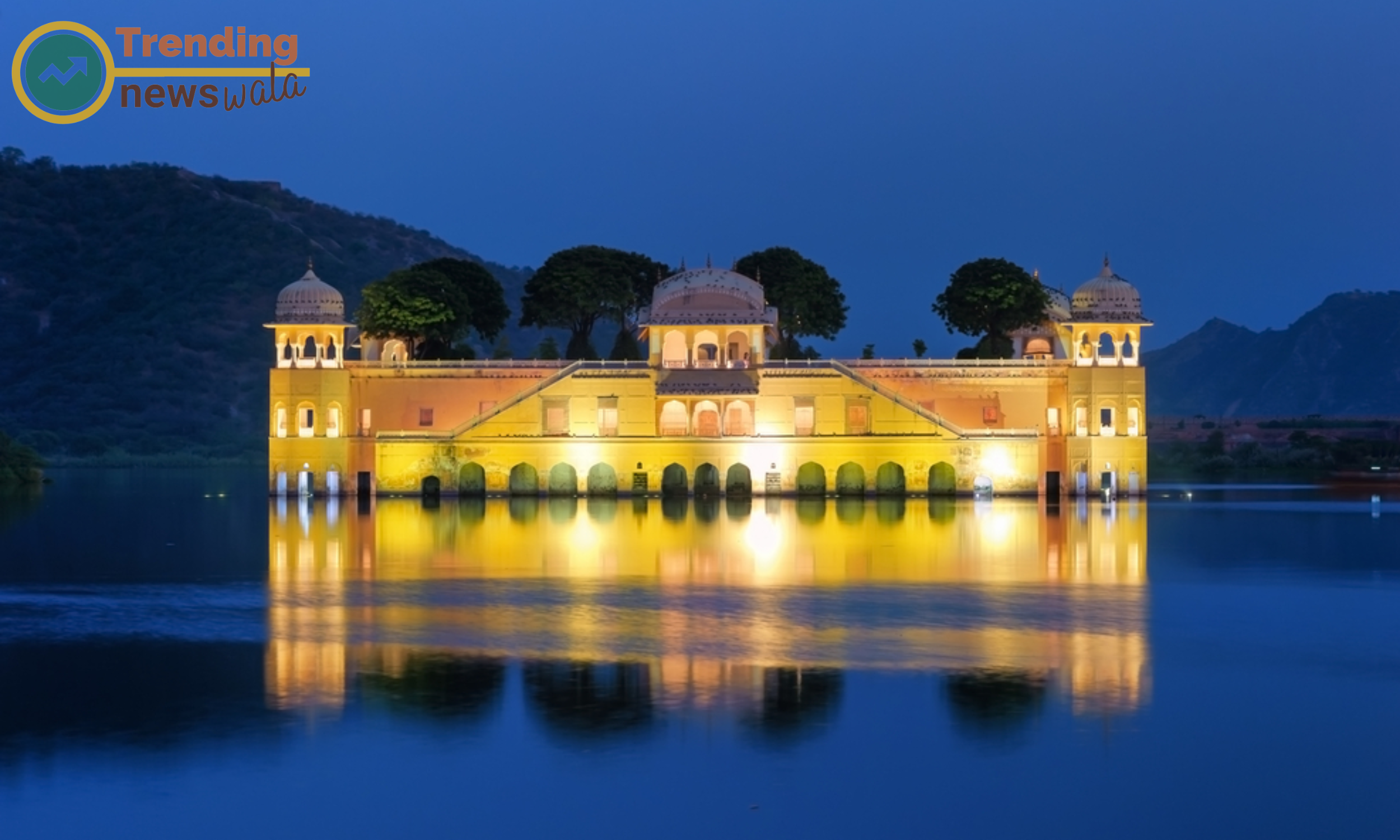
Jai Mahal Palace is a magnificent heritage hotel located in Jaipur, Rajasthan, India. Nestled amidst 18 acres of beautifully landscaped Mughal gardens, this palace-turned-hotel offers a luxurious and regal experience to its guests. Here are more details about Jai Mahal Palace:
History and Architecture:
- Jai Mahal Palace was built in 1745 as a royal residence for the Prime Minister of Jaipur, Maharaja Sawai Jai Singh II.
- The architecture of the palace reflects a blend of Rajput and Mughal styles, showcasing grandeur and opulence.
Royal Residency: The palace served as the residence for three Prime Ministers of the princely state of Jaipur before being converted into a hotel.
Conversion to Heritage Hotel: In the 1950s, Jai Mahal Palace was converted into a heritage hotel by the Taj Group of Hotels, preserving its historic charm while offering modern amenities to guests.
Mughal Gardens: The extensive Mughal gardens surrounding the palace are a highlight of the property. They feature manicured lawns, fountains, and water channels, creating a serene and picturesque setting.
Accommodations:
- Jai Mahal Palace offers luxurious accommodations with elegantly appointed rooms and suites.
- The rooms are designed to exude a sense of royal comfort, featuring traditional Rajasthani decor and modern amenities.
Dining Options: The palace boasts multiple dining options, each offering a unique culinary experience. Restaurants like "Cinnamon" and "Giardino" serve a range of Indian and international cuisines in a regal ambiance.
Jiva Spa:
- The Jiva Spa at Jai Mahal Palace offers rejuvenating spa treatments inspired by traditional Indian wellness practices.
- Guests can indulge in massages, Ayurvedic therapies, and beauty treatments in a tranquil spa setting.
Swimming Pool: The palace features a beautiful swimming pool surrounded by lush gardens, providing a perfect spot for relaxation and leisure.
Banquet and Event Spaces:
- Jai Mahal Palace is a popular venue for weddings, events, and conferences.
- The palace offers expansive banquet halls, outdoor lawns, and courtyards for hosting grand celebrations.
Cultural Performances: Guests can enjoy live performances of traditional Rajasthani music and dance, adding to the cultural experience of staying at a heritage property.
Heritage Walks: The hotel organizes heritage walks for guests, allowing them to explore the historical and architectural details of the palace.
Location: Jai Mahal Palace is strategically located near the city center, providing convenient access to Jaipur's major attractions and markets.
Conservation Efforts: The palace has undergone meticulous conservation efforts to preserve its historical features and maintain its architectural integrity.
Jai Mahal Palace offers a luxurious escape into the grandeur of Rajasthan's royal history. Whether one is seeking a regal stay, a memorable dining experience, or a venue for a grand celebration, Jai Mahal Palace provides an enchanting blend of heritage and modern luxury.
Immerse yourself in the timeless elegance of Jai Mahal Palace, a 18th-century masterpiece surrounded by lush gardens and tranquil pools. This heritage property offers a blend of Mughal and Rajput architecture, providing a regal setting for a fairy tale wedding. The intricately decorated halls, picturesque courtyards, and luxurious accommodations make Jai Mahal Palace a sought-after destination for couples seeking a truly royal experience.
Rambagh Palace : Opulence Redefined
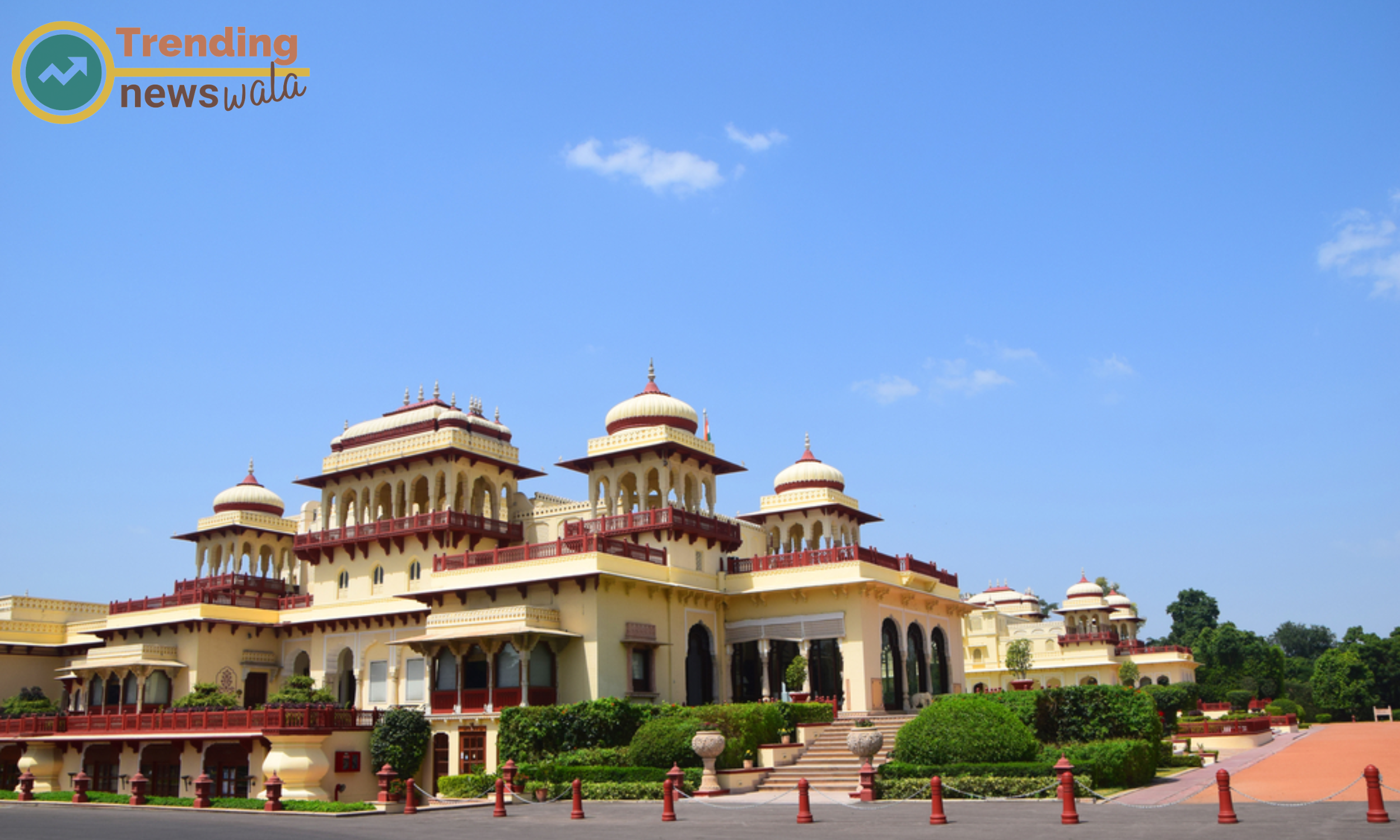
Rambagh Palace is an opulent heritage hotel located in Jaipur, Rajasthan, India. Formerly the residence of the Maharaja of Jaipur, this majestic palace has been transformed into a luxurious hotel by the Taj Group of Hotels. Here are more details about Rambagh Palace:
Historical Significance:
- Rambagh Palace was originally built in 1835 as a garden house for the wet nurse of Maharaja Sawai Ram Singh II.
- It later became the residence of the Maharaja and served as the royal guesthouse.
Architecture and Design:
- The palace boasts a magnificent blend of Rajput and Mughal architectural styles, showcasing grand domes, intricately carved pillars, and ornate interiors.
- The architecture reflects the royal heritage of Rajasthan, with elements of exquisite detailing.
Conversion into a Hotel:
- In 1957, Rambagh Palace was converted into a luxury hotel by the Taj Group, preserving its historical charm while offering modern amenities to guests.
Royal Accommodations:
- Rambagh Palace offers lavishly decorated rooms and suites that retain the opulence of the royal era.
- Each room is designed with a unique theme, featuring period furniture, rich fabrics, and regal decor.
Restaurants and Dining:
- The palace houses several dining options, including "Suvarna Mahal," an exquisite Indian fine-dining restaurant, and "Rajput Room," offering a blend of Indian and continental cuisines.
- Guests can also enjoy al fresco dining at the "Polo Bar" with views of the lush gardens.
Gardens and Grounds:
- Rambagh Palace is surrounded by 47 acres of landscaped gardens that include Mughal terraced lawns, flowerbeds, and serene water bodies.
- The expansive grounds provide a tranquil retreat for guests, offering a perfect blend of nature and heritage.
Swimming Pool and Spa:
- The palace features a stunning indoor and outdoor swimming pool, providing a luxurious setting for relaxation.
- The "Jiva Grande Spa" offers a range of rejuvenating spa treatments and wellness experiences inspired by Indian traditions.
Events and Celebrations:
- Rambagh Palace is a popular venue for weddings, events, and royal celebrations.
- The palace provides multiple banquet halls, courtyards, and lawns for hosting grand and memorable events.
Polo Bar and Museum:
- The "Polo Bar" at Rambagh Palace showcases the history of the palace's connection to polo, with artifacts, photographs, and memorabilia.
- Guests can explore the museum and learn about the rich heritage of the palace.
Cultural Performances: Guests can experience live performances of traditional Rajasthani music and dance, adding to the cultural ambiance of the palace.
Royal Heritage Walks: The hotel organizes heritage walks, allowing guests to explore the historical and architectural details of the palace.
Location: Rambagh Palace is strategically located, providing easy access to Jaipur's major attractions, including the City Palace and Hawa Mahal.
Preservation Efforts: The palace has undergone meticulous preservation efforts to maintain its historical features, ensuring a seamless blend of heritage and luxury.
Rambagh Palace stands as a living testament to the royal legacy of Jaipur, offering guests an unparalleled experience of regal hospitality. With its exquisite architecture, lush gardens, and commitment to preserving history, Rambagh Palace remains a jewel in the crown of Rajasthan's heritage.
Once the residence of the Maharaja of Jaipur, Rambagh Palace is the epitome of opulence. The sprawling gardens, grand ballrooms, and historic suites create a lavish ambiance for a majestic celebration. Exchange vows in the palace gardens, host a gala reception in the Crystal Ballroom, and indulge in the regal treatment that befits a royal wedding at Rambagh Palace.
Samode Palace: A Hidden Gem
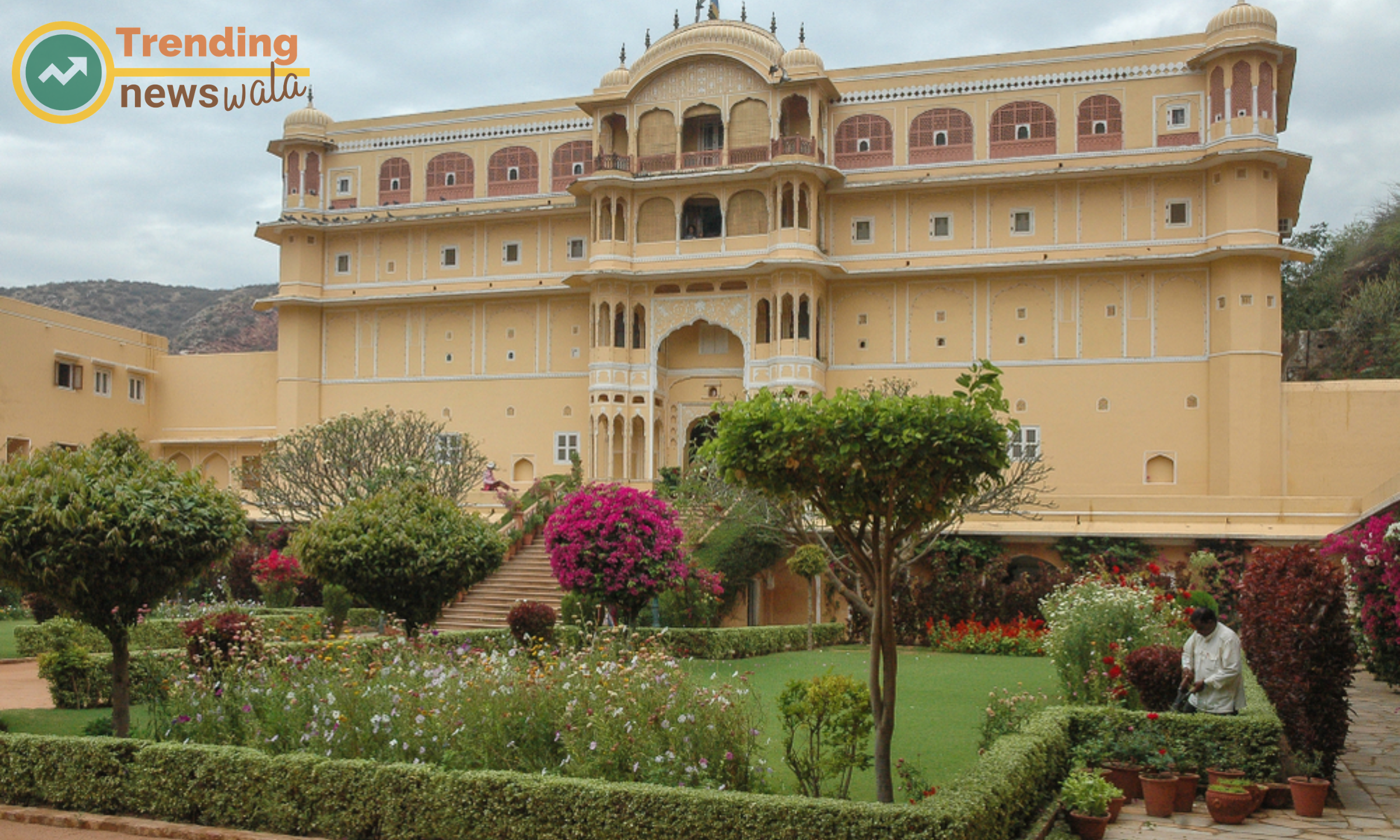
Samode Palace is a luxurious heritage hotel located near Jaipur, in the village of Samode, Rajasthan, India. This historical palace, known for its architectural beauty and regal ambiance, has been transformed into a premium destination for travelers seeking a glimpse into Rajasthan's rich cultural and royal heritage. Here are more details about Samode Palace:
History and Origin:
- Samode Palace was built over 475 years ago by the Rajput rulers of Samode as their ancestral home.
- The palace has a long and storied history, with each generation of rulers contributing to its architectural splendor.
Architecture and Design:
- The architecture of Samode Palace is a stunning blend of Rajput and Mughal styles, characterized by intricate frescoes, ornate mirror work, and detailed carvings.
- The palace showcases the opulence and grandeur typical of Rajasthani palaces, making it a visual delight for visitors.
Accommodations:
- Samode Palace offers lavish accommodations with elegantly designed rooms and suites.
- Each room is uniquely decorated, featuring traditional Rajasthani motifs, antique furniture, and modern amenities.
Durbar Hall:
- The Durbar Hall of Samode Palace is a grand assembly hall adorned with beautiful paintings, mirror work, and antique chandeliers.
- This hall has been the venue for many royal gatherings and celebrations.
Sheesh Mahal:
- The Sheesh Mahal, or Hall of Mirrors, is a spectacular part of the palace known for its intricate mirror work and glass embellishments.
- It creates a magical ambiance, especially when illuminated with lights.
Mughal Gardens:
- The palace is surrounded by well-maintained Mughal-style gardens with fountains, pavilions, and pathways.
- The gardens offer a serene retreat and provide an ideal setting for leisurely strolls.
Restaurants and Dining:
- Samode Palace features exquisite dining options, including the "Samode Palace Restaurant," offering a range of Rajasthani, Indian, and international cuisines.
- Guests can savor their meals in a regal setting with views of the palace's surroundings.
Events and Celebrations:
- The palace is a popular venue for weddings, events, and cultural performances.
- The picturesque surroundings and elegant architecture make it a sought-after destination for couples seeking a royal wedding.
Pool Area: Samode Palace has a beautiful swimming pool surrounded by lush greenery, providing a refreshing space for guests to relax.
Cultural Activities: Guests at Samode Palace can enjoy traditional Rajasthani music and dance performances, adding to the cultural experience of staying at a heritage property.
Location: Samode Palace is situated approximately 40 kilometers northwest of Jaipur, making it accessible for travelers exploring the Golden Triangle of Delhi, Agra, and Jaipur.
Preservation and Restoration: The palace has undergone careful preservation and restoration efforts to maintain its historical charm and architectural integrity.
Samode Palace offers a luxurious and immersive experience that transports guests to the era of Rajput royalty. With its rich history, artistic beauty, and warm hospitality, Samode Palace continues to be a cherished destination for those seeking a royal retreat in the heart of Rajasthan.
For a more intimate affair, consider Samode Palace, a hidden gem located just outside Jaipur. Surrounded by the rugged Aravalli hills, this palace offers a blend of Mughal and Rajput architecture, creating a fairy tale setting for a destination wedding. The Sheesh Mahal, with its mirrored interiors, adds a touch of magic to any celebration, making it a charming choice for a romantic union.
Choosing Jaipur as your destination wedding location is synonymous with embracing a rich tapestry of history, culture, and royal grandeur. These five royal palaces serve as idyllic venues that not only celebrate love but also offer an immersive experience into the regal heritage of Rajasthan. With each palace telling a story of its own, your wedding in Jaipur is destined to be a chapter in a grand narrative of timeless elegance and royal splendor.

What makes Jaipur a popular destination for weddings?
Jaipur, known as the Pink City, is celebrated for its rich cultural heritage, regal architecture, and royal palaces. It provides a fairy-tale setting that attracts couples seeking a grand and memorable destination wedding.
Which are the top 5 royal palaces for a destination wedding in Jaipur?
The top 5 royal palaces in Jaipur for destination weddings are City Palace, Hawa Mahal, Jai Mahal Palace, Rambagh Palace, and Samode Palace.
How can one book a royal palace for a destination wedding in Jaipur?
Booking a royal palace for a destination wedding typically involves reaching out to the management of the respective palace or working with a wedding planner who specializes in destination weddings. The process includes checking availability, discussing packages, and making reservations well in advance.
What kind of wedding venues do these palaces offer?
These palaces offer a variety of wedding venues, including grand courtyards, ornate banquet halls, lush gardens, and historical chambers. Couples can choose a venue that suits their preferences and the size of their guest list.
Are these palaces suitable for both large and intimate weddings?
Yes, these palaces cater to both large and intimate weddings. They offer versatile spaces that can be customized to accommodate different wedding sizes and themes.
What are the dining options at these palaces for wedding events?
The palaces have on-site restaurants and catering services that provide a diverse range of culinary options. From traditional Rajasthani cuisine to international fare, couples can choose menus that suit their taste and preferences.
Can these palaces arrange cultural performances for wedding events?
Yes, cultural performances such as traditional Rajasthani music and dance can be arranged at these palaces to add a touch of local flavor and entertainment to wedding events.
Are accommodation facilities available for wedding guests at these palaces?
Yes, these palaces offer luxurious accommodation facilities for wedding guests. The rooms and suites are often designed with regal decor, providing a comfortable and memorable stay.
What additional services do these palaces provide for weddings?
These palaces may offer a range of additional services, including wedding planning assistance, decoration, photography, and spa services. Couples can work with the palace staff or hire external vendors for specific requirements.
How can one incorporate the local culture into a destination wedding in Jaipur?
Couples can incorporate local culture by incorporating traditional Rajasthani elements in decor, cuisine, attire, and entertainment. Hiring local performers, using traditional fabrics, and including regional rituals can add an authentic touch to the celebration.





